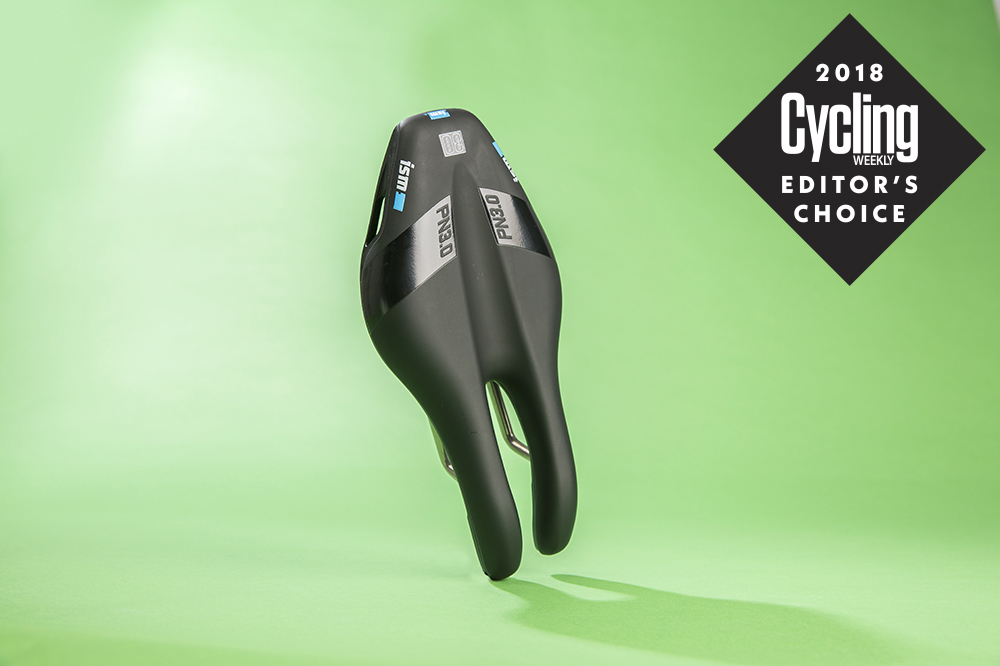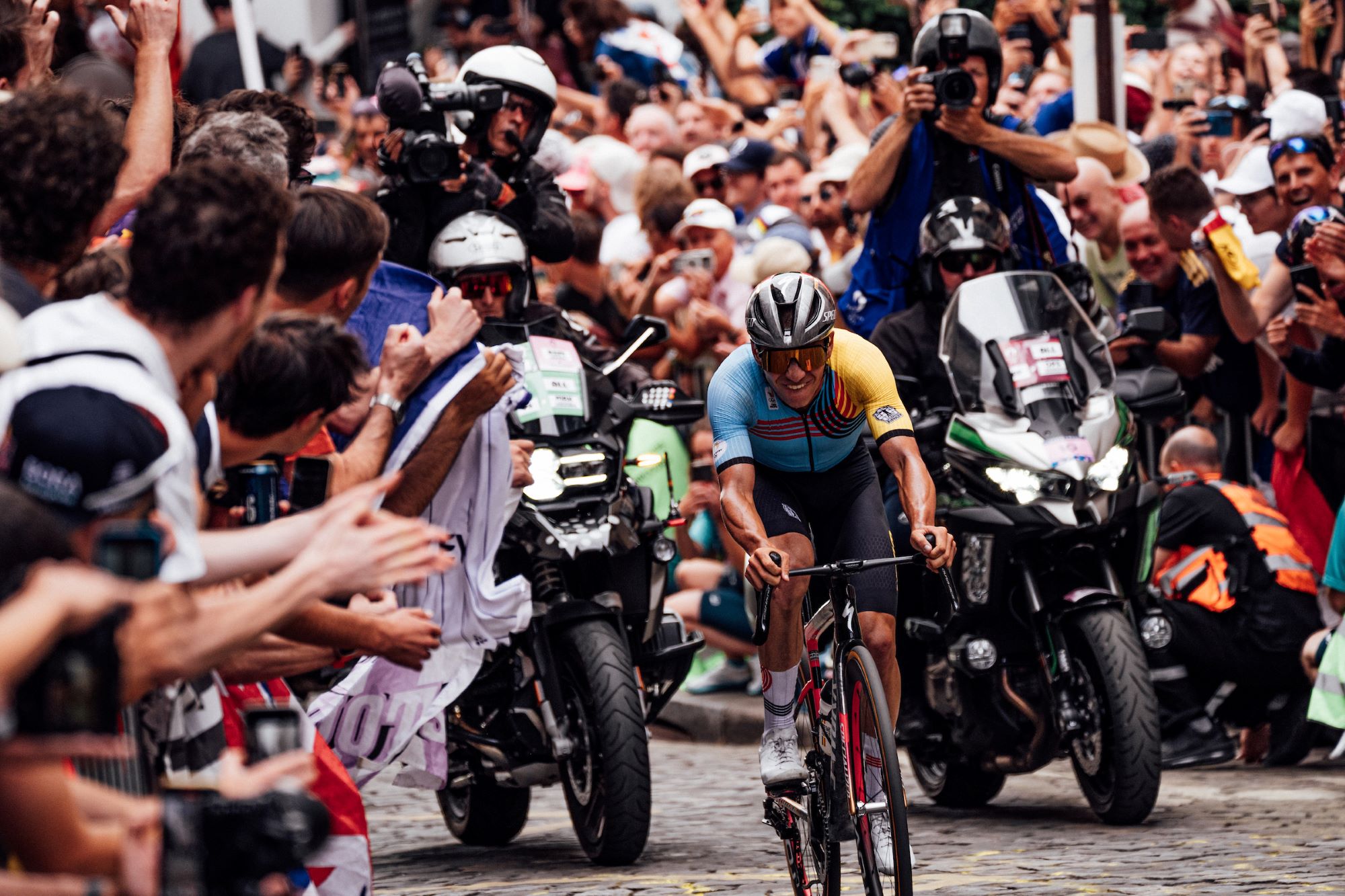ISM PN 3.0 saddle review
The split nose of the ISM PN 3.0 divides opinion with its looks, but can lead to a healthier, more comfortable and overall better time trial

For me it was love at first sit, thought certainly not at first sight: I had avoided ISM saddles for years because I didn't like the look of them. Now I couldn't go back to using a traditional saddle on a TT bike.
-
+
Proven to increase bloodflow and decrease genital numbness
-
+
Very comfortable in an aggressive position
-
-
Heavier than a traditional saddle of this price
-
-
Looks
You can trust Cycling Weekly.

Where has the ISM PN 3.0 been all our time-trialling life? The new PN (‘performance narrow’) range offers better thigh and hamstring clearance than earlier versions thanks to a narrower ‘nose’. For us it was love at first sit.
If you haven't tried a split-nose saddle before, the way it works is the lower you get on the tri-bars the better the ISM feels (whereas a conventional saddle feels progressively more uncomfortable as pressure on the soft-tissue area increases) allowing you to stay anchored in your aero position – and it works for men and women.
The ISM PN3.0 was for us a revelation, earning a perfect 10 thanks to the more comfortable turbo-ing and time trialling it facilitated, thereby earning its place in Editor's Choice 2018.
The ISM PN 3.0 isn't pretty. If the Cobb Plus is not – by its own marketing team's admission – the cutest kid in the classroom, then the ISM PN 3.0 is a goblin with two noses that appears in said kids’ nightmares. But, it’s a dream come true for the time trialling grown-ups.
US brand ISM’s patented unisex split design eliminates the nose of the saddle altogether in order to help maintain blood flow and avoid damage to that very sensitive soft tissue - for both men and women - you sit on when rotated forward on the tri-bars.
ISM's PN (‘performance narrow’) range offers better thigh and hamstring clearance than earlier versions thanks to a narrower ‘nose’ (54mm at the end) but if you’ve never tried one before you will still initially notice more pressure on your inner thighs than with a conventional saddle – perhaps exaggerated by the lack of pressure in the middle. ISM says the PN 3.0 will “disappear beneath you” and if you don’t like the way it looks then this can only be a good thing, but in terms of the way it feels when you get down into an aero tuck this is absolutely the case.
ISM PN 3.0 set-up
To set up the PN 3.0, it’s important to follow ISM's installation instructions. Since the PN 3.0 doesn’t have a nose, setback will be different: ISM says the “nose area” should be 5-8cm further back, and it may require a lower saddle height of 5mm. It will play havoc with a bike fit but we found it relatively easy to get it right on feel.
Ride
Sitting on the back of it, as you might do on a road bike on the tops, is actually uncomfortable, but as you get further down on the tri-bars the ISM feels better and better just as a conventional saddle would feel worse and worse. As your pelvis rotates forwards that initial pressure on the inner thigh lessens. Finally, on the tri-bars and putting power through the pedals it feels completely right, allowing you to stay still, anchored and comfortable in your aero position without your rear end shifting around as if playing a game of ‘the saddle is lava’.
In the sternest test of all for a TT saddle, the ISM PN 3.0 breezes through 20-minute FTP intervals on the turbo. With a conventional saddle the pain in your undercarriage normally surpasses the one in your legs long before the interval is up.
ISM doesn’t make featherweight carbon-fibre versions of its racing models – they mostly have steel rails (stainless steel in the case of the PN 3.0) and moulded plastic shells.
ISM does not go down the F1 materials route. Having said that, the PN 3.0 does have what ISM calls an “auto racing-inspired air vent chassis”, and as if to make up for a lack of techno gimmicks elsewhere it is available with a black, blue, pink or white base. But weight-conscious TT’ers might be slightly disappointed with the relatively high weight of the ISM PN 3.0 compared to other saddles at this price.
Value
Weight is the only straightforward comparison it's possible to make between the ISM PN 3.0 and other non-ISM time trial-specific saddles since the ISM is so different – apples and oranges doesn’t cover it - but for pure TT comfort, which ought to lead to better performance and certainly a healthier perineum and zero numbness, the ISM PN 3.0 is a revelation.
No doubt there will be riders who don't get on with the ISM shape but if you do, this could be the best £160 you've ever spent. You can demo one via ISM's UK distributor, Upgrade Bikes.

Thank you for reading 20 articles this month* Join now for unlimited access
Enjoy your first month for just £1 / $1 / €1
*Read 5 free articles per month without a subscription

Join now for unlimited access
Try first month for just £1 / $1 / €1
Get The Leadout Newsletter
The latest race content, interviews, features, reviews and expert buying guides, direct to your inbox!
Simon Smythe is a hugely experienced cycling tech writer, who has been writing for Cycling Weekly since 2003. Until recently he was our senior tech writer. In his cycling career Simon has mostly focused on time trialling with a national medal, a few open wins and his club's 30-mile record in his palmares. These days he spends most of his time testing road bikes, or on a tandem doing the school run with his younger son.
-
 Broken hips, hands, and collarbones: Paris-Roubaix's lengthy injury list lays bare brutality of race
Broken hips, hands, and collarbones: Paris-Roubaix's lengthy injury list lays bare brutality of race"It probably wasn't the best idea to continue," says one of weekend's many wounded riders
By Tom Davidson Published
-
 Remco Evenepoel hails end of 'dark period' and announces racing return
Remco Evenepoel hails end of 'dark period' and announces racing returnOlympic champion says comeback from training crash has been 'the hardest battle of my life so far'
By Tom Thewlis Published
-
 A bike rack with an app? Wahoo’s latest, and a hub silencer – Sea Otter Classic tech highlights, Part 2
A bike rack with an app? Wahoo’s latest, and a hub silencer – Sea Otter Classic tech highlights, Part 2A few standout pieces of gear from North America's biggest bike gathering
By Anne-Marije Rook Published